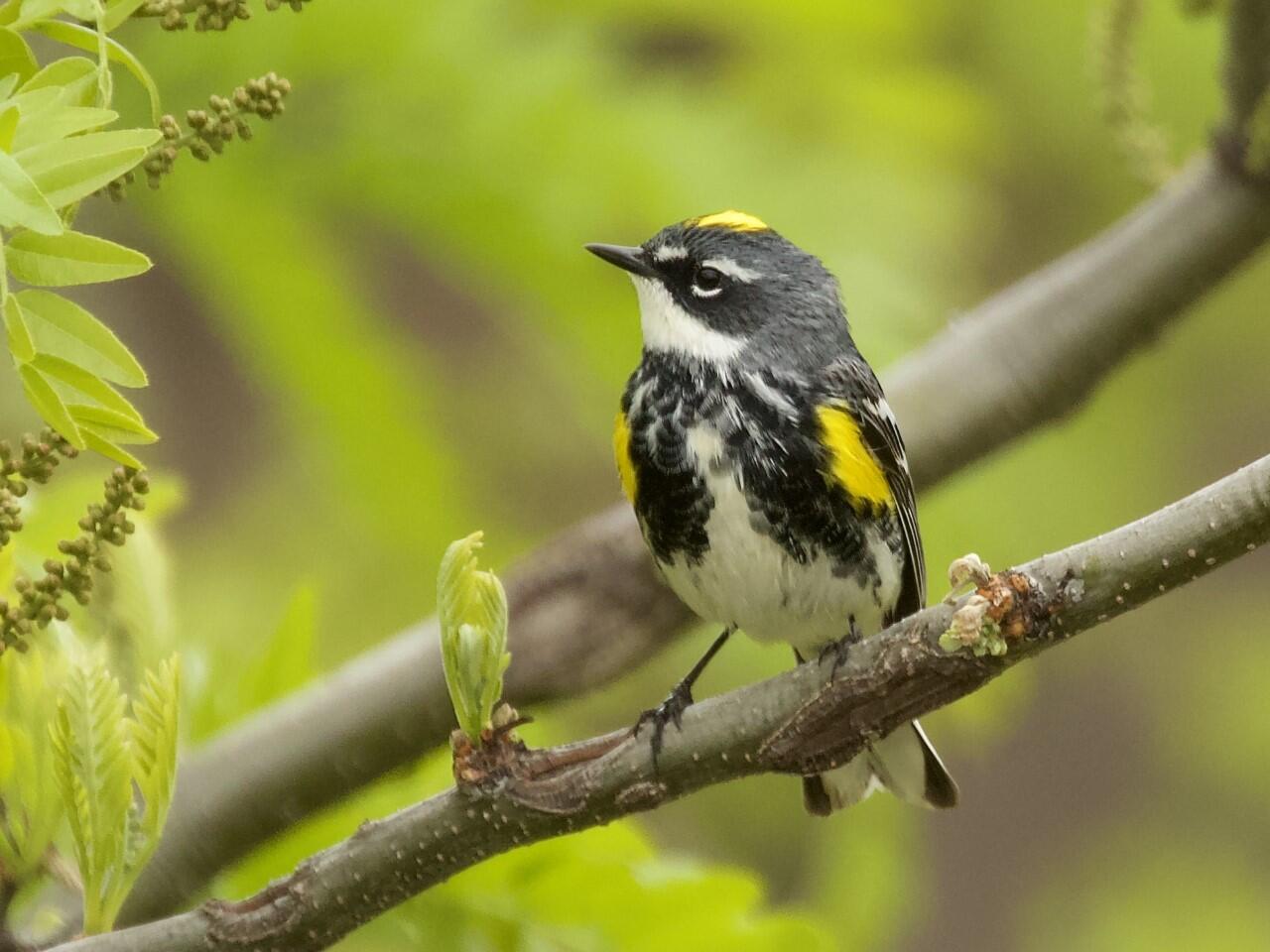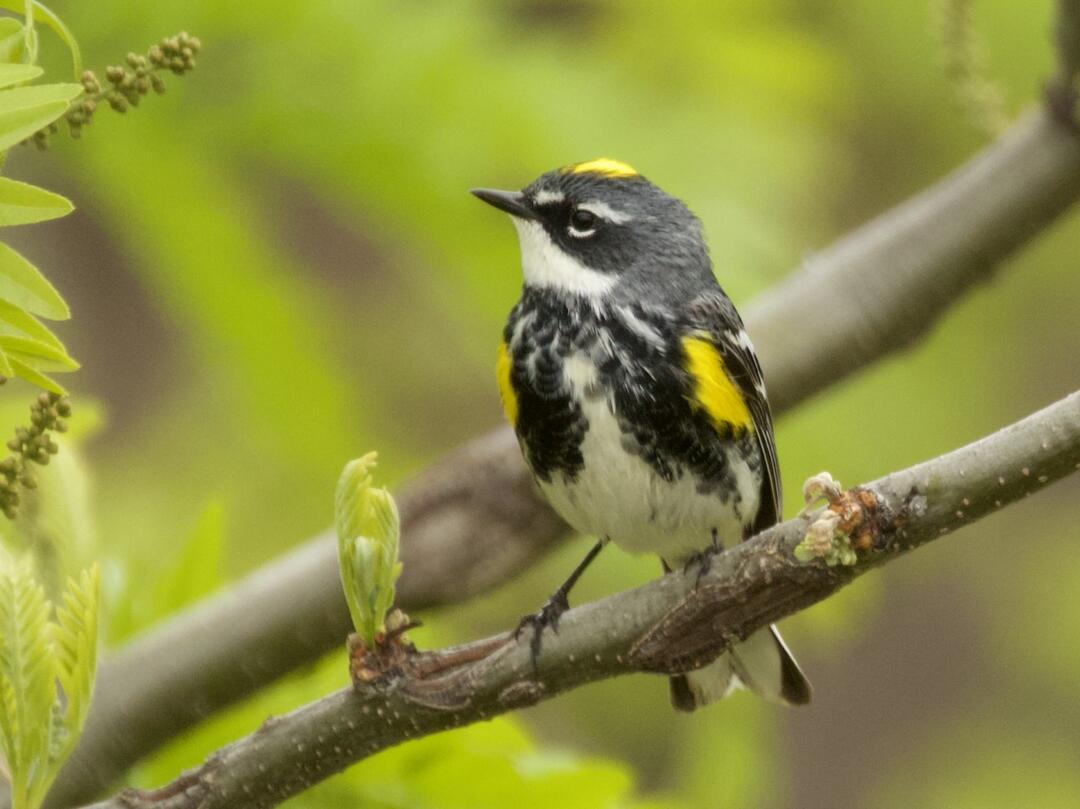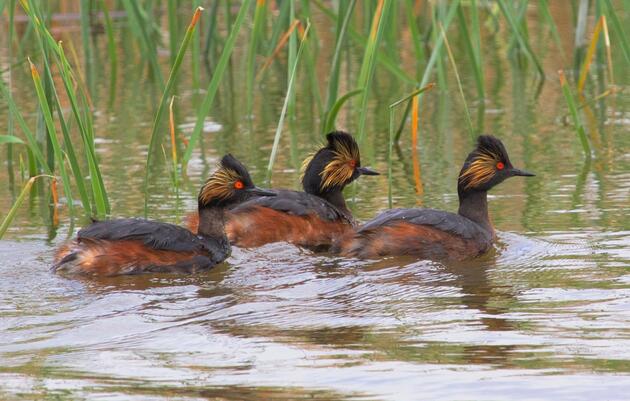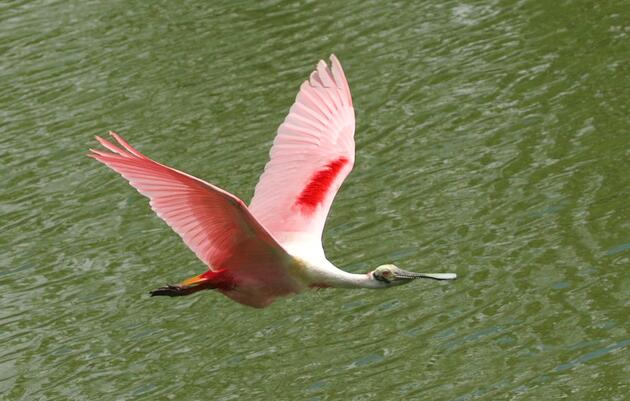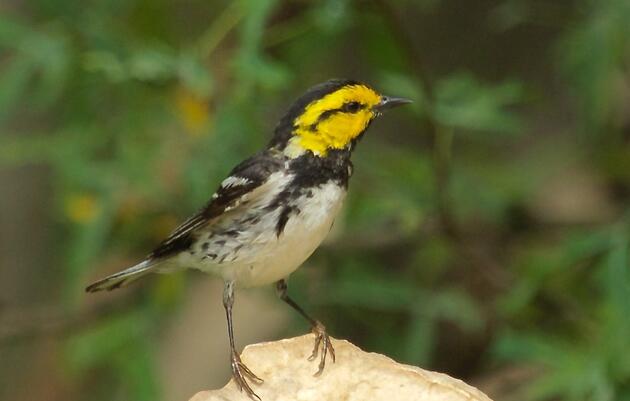For more than a month this column has taken you on a cyber-tour around the country during the spring songbird migration. This is the sixth column during the COVID-19 pandemic confinement. The reader can link to other articles in the series using the references at the bottom of this page. The tour began in the southwestern part of the US, where the author resides in Santa Fe, NM. For more than ten years each spring he has taken at least one photographic outing to another part of the country to follow the arrival of the neo-tropical migrants from Central and South America.
The spring timeframe for intercepting the peak flow of the migrating songbirds in the upper Midwest is the first three weeks in May. If one lives in Santa Fe, a visit to central Kansas, like the one described in the previous article, is a natural part of the itinerary, both in terms of timing and travel plans. This article will feed into a major excursion of the upper Midwest. The trip will first continue east to Missouri, where the plains begin their transition to the hardwood forest habitat that is so important to the migrating songbirds. Let’s begin again with several of the land-based birds that are found in the Kansas heartland. For a birder from the Southwest it is always a reminder that the west has been left behind when one sees the Myrtle or eastern subspecies of the Yellow-rumped Warbler. As seen in the lead photo, this bird has a white throat and dark mask, unlike the Audubon’s or western subspecies that has a bright yellow throat. (While writing this column I was mystified by the term “Myrtle”. It turns out that Yellow-rumped Warblers are fond of and uniquely able to digest the waxy Myrtle berry – which established the name designation).
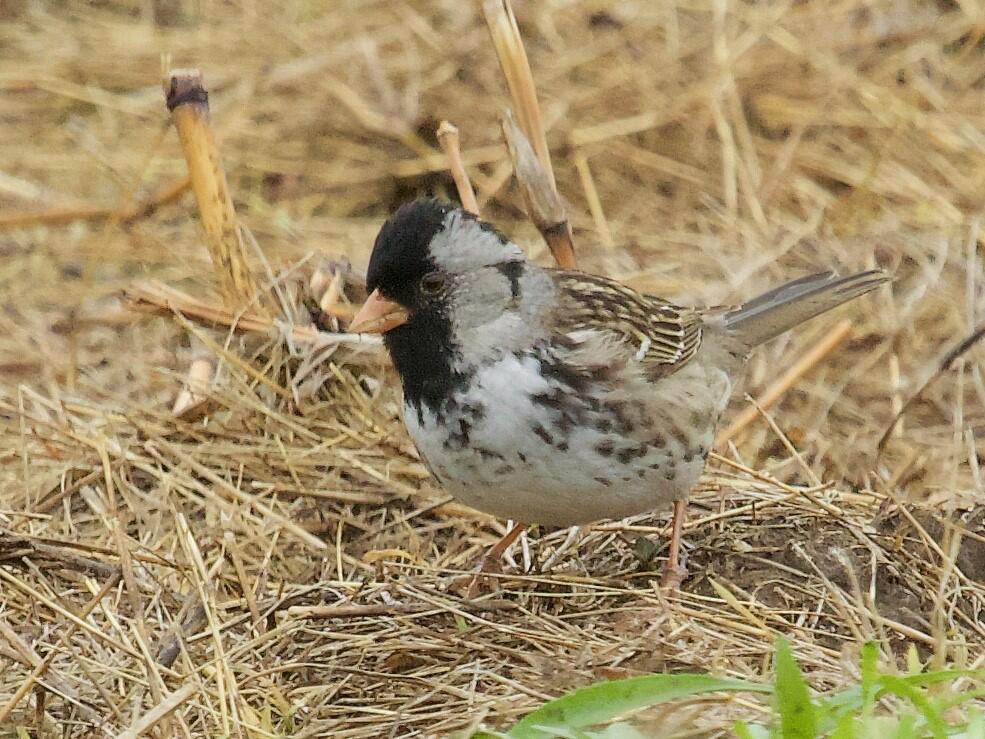
As an extension of my previously discussed birding at Quivera NWR in Kansas, the refuge affords the chance to see Harris’s Sparrows. They are just beginning their migration from the southern Great Plains to northern Canada in late April. With their distinctive dark-black face and orange beak, they are unlike any of the multitude of sparrows commonly found in New Mexico.
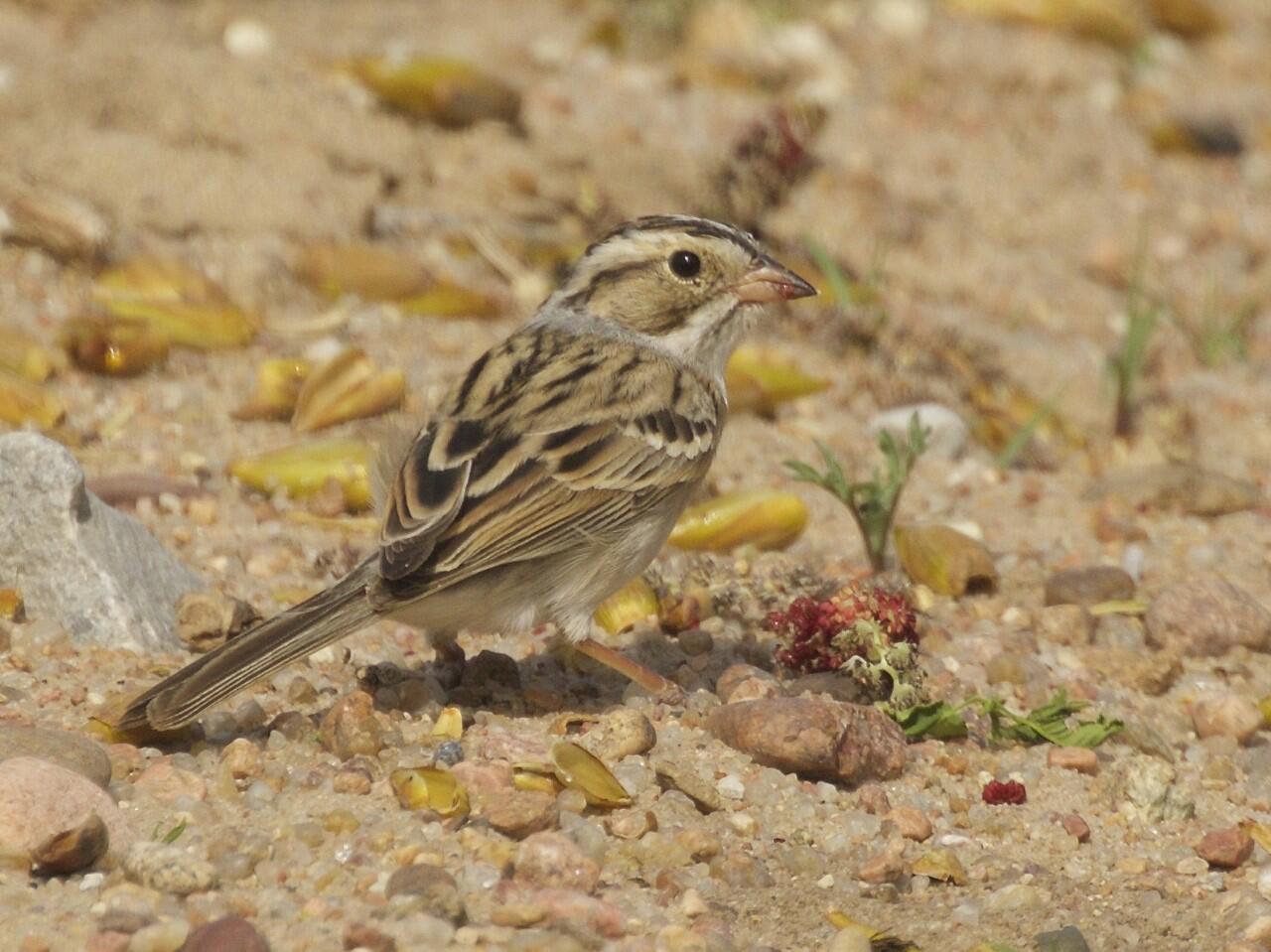
Similarly, Clay-colored Sparrows can appear in large groups this time of year as they migrate north to the central plains of Canada. For a bird typically found in the scrubland plains, it was quite surprising to find a flock feeding ravenously on bright red, fruity treetop buds in the middle of a gravel road at the refuge.
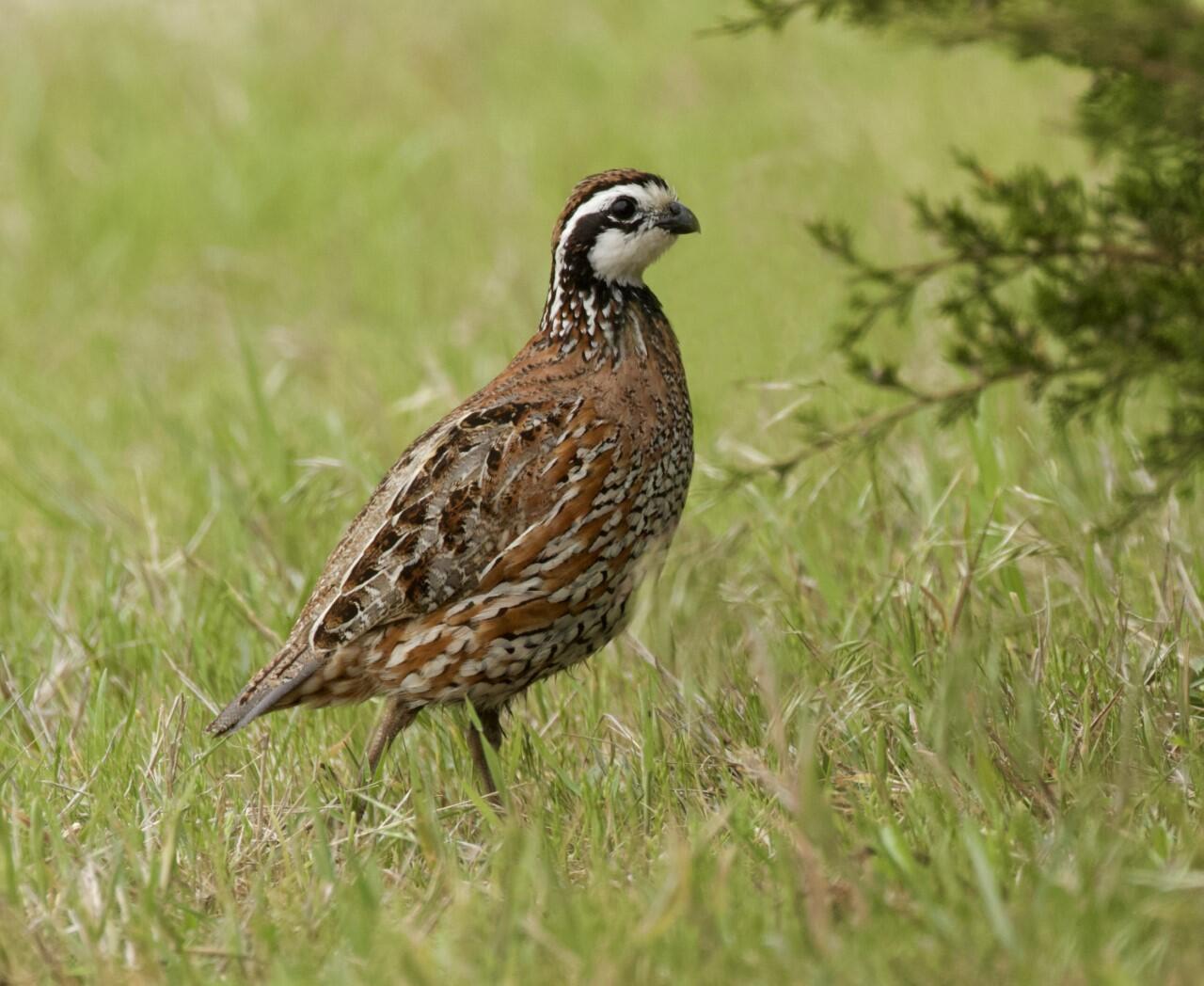
And, with some luck, you may find a covey of Northern Bobwhite along the grass-like stretches there. The photo was the only time I have been able to get a clear view of such an easily flushed male bird.
Now consider slowly driving through eastern Kansas on the way to the Missouri state line. It is always possible that you will see a Scissor-tailed Flycatcher perched along the roadside – perhaps on a fence or power line. With its extremely long tail feathers, it can break the monotony of the seeming endless plains.
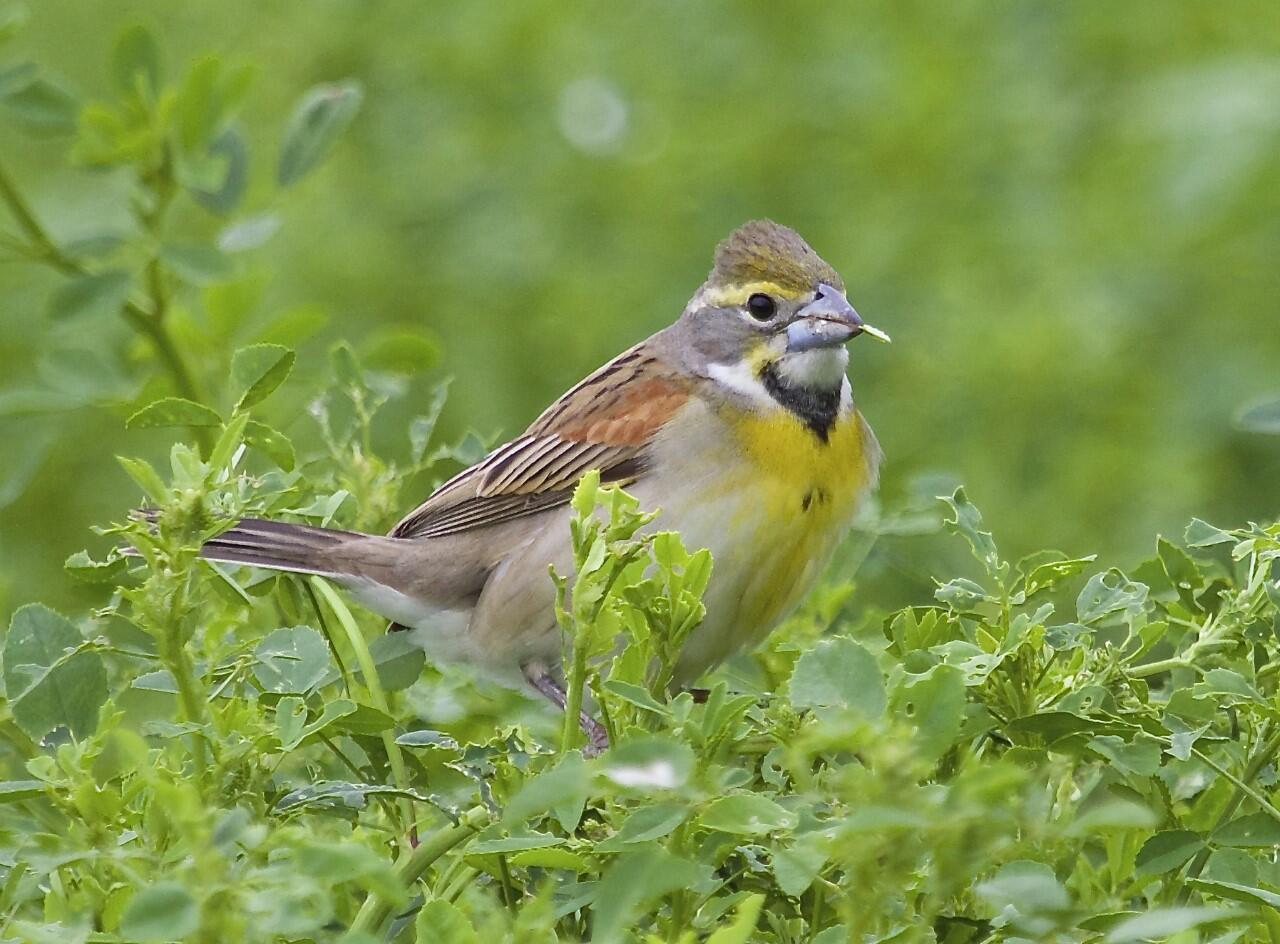
The drive eastward might take you to the Flint Hills area in Kansas, where both the Tallgrass Prairie Preserve and the Flint Hills National Wildlife Refuge are located. The Preserve is an important area as it contains most of the remnant plains ecosystem and offers worthwhile birding opportunities. Given its notoriety, I was surprised to have my most remarkable bird episode some 45 miles east of there at, what was for me, a virtually unknown wildlife refuge. The birding had been quite slow all day as I randomly toured the gently rolling Flint Hills. At the edge of the refuge there was a bright green forage crop (many acres in size) located next to the road. I stopped my car there to identify several birds on a power line before realizing that the whole field was filled with Dickcissels. As seen in the photo, they were feeding on the tips of the forage crop. Countless numbers of this stocky grassland bird had “fallen out” on what they must have thought was the promised land after migrating north from Venezuela. Such is the unpredictability of spring birding.
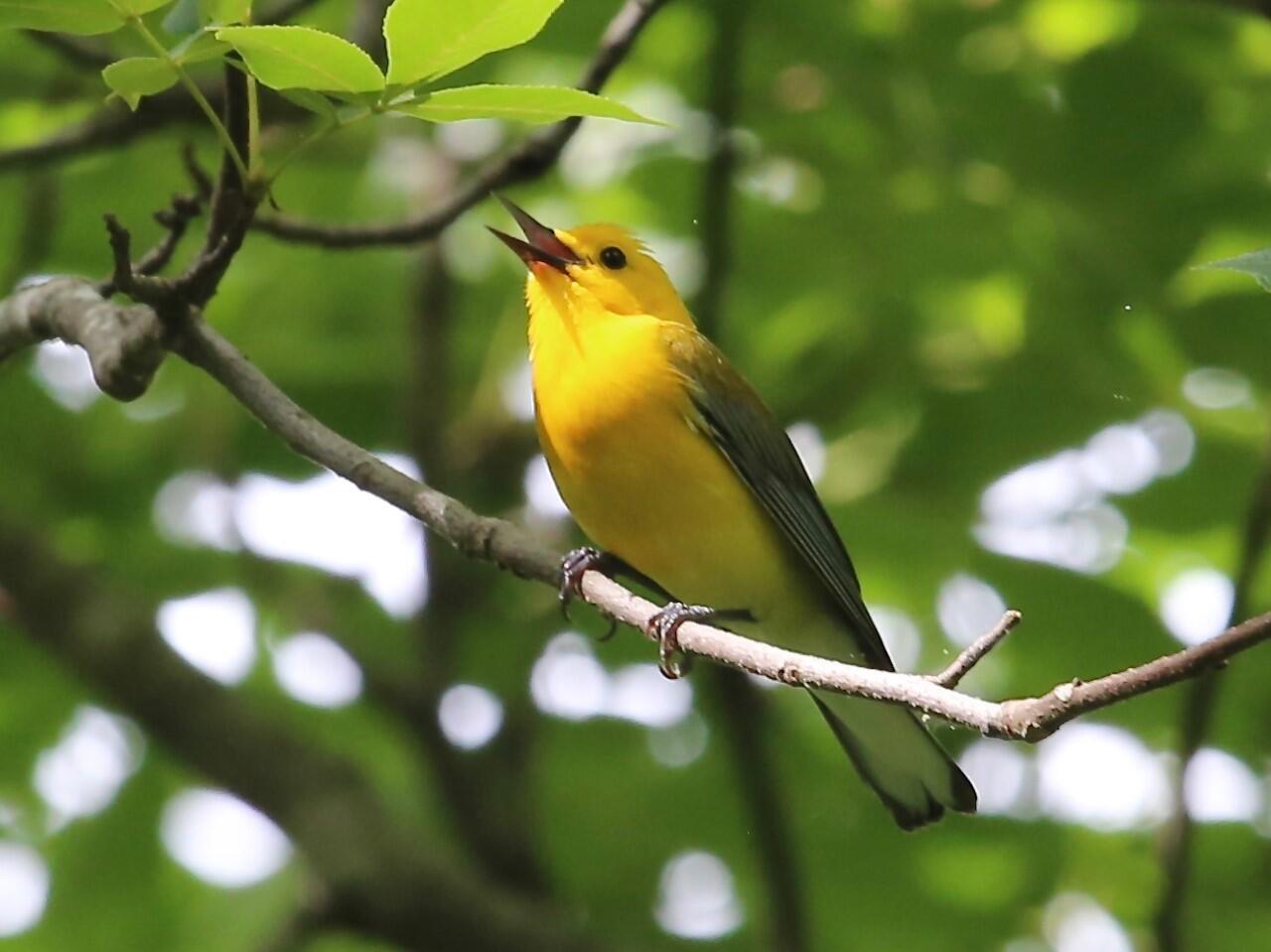
My travels further east have always meant taking I-44 through Joplin, Missouri. At this point there is a clear change from the plains to a hardwood forest terrain – albeit with the usual agricultural activity. There is a major birding area just as you cross the state line at Joplin. This is the Shoal Creek Conservation and Education Center, which has a varied woodland and prairie habitat that supports numerous migrating birds. (During my past visits there a number of years ago it was known as the Wildcat Glades Conservation and Audubon Center). The thick woods near the Shoal Creek are host to nesting Prothonotary Warblers. Although not mentioned in the previous discussion of the Texas coast, many of these golden-yellow songbirds have flown across the gulf from the Yucatan, and then spread across the southeastern part of the United States. They are found in dense wooded bottomlands, as far north as the Canada border - but in more limited numbers there. It is a rush to get a photo of a breeding male in full singing mode, as was the case on that visit.
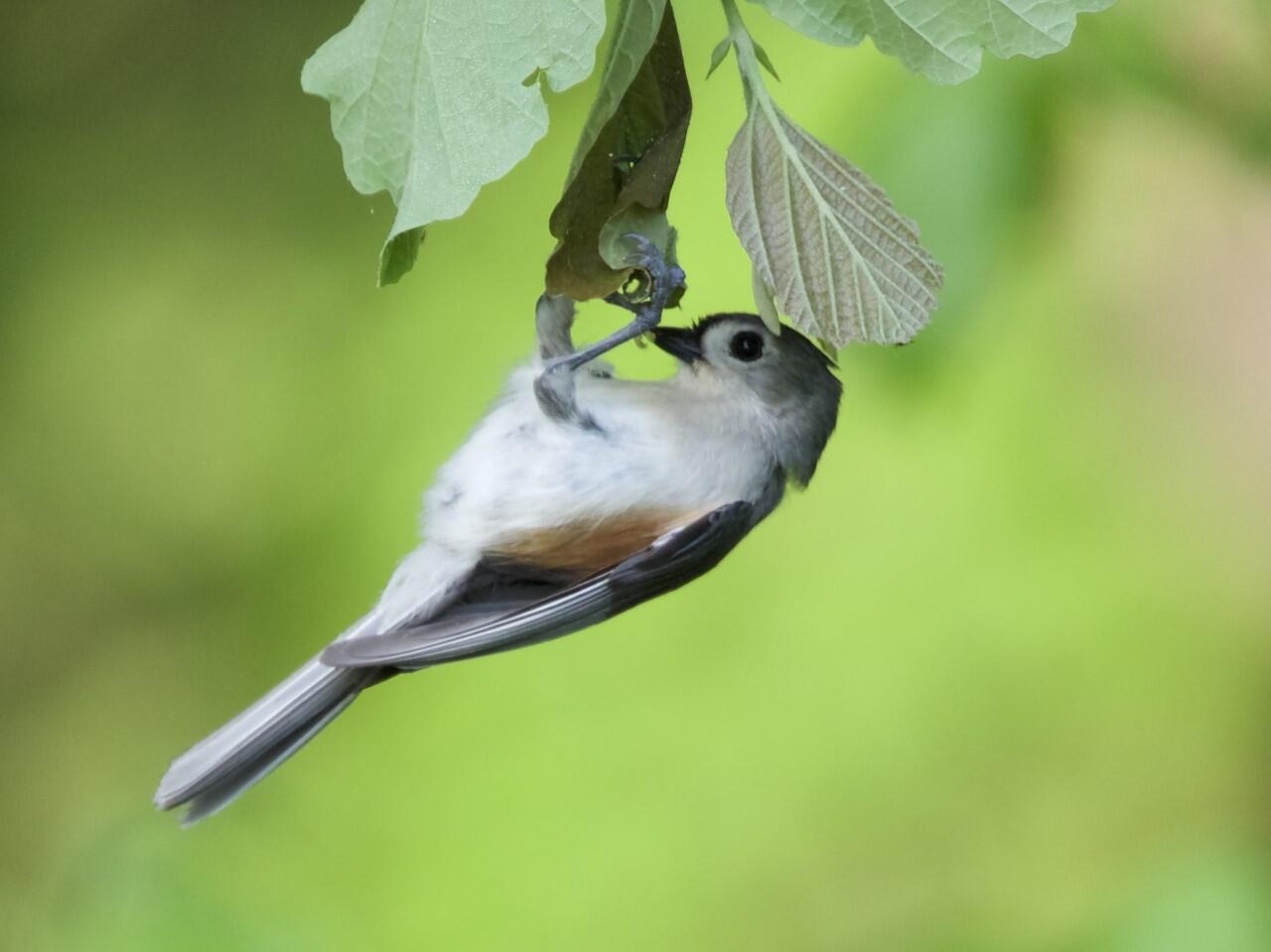
Glance around these same trees and you will find a year-around inhabitant, the Tufted Titmouse, that certainly can be entertaining with its feeding acrobatics. Recall from a previous article that the Black-crested Titmouse of south Texas was once considered a subspecies of this tufted version.
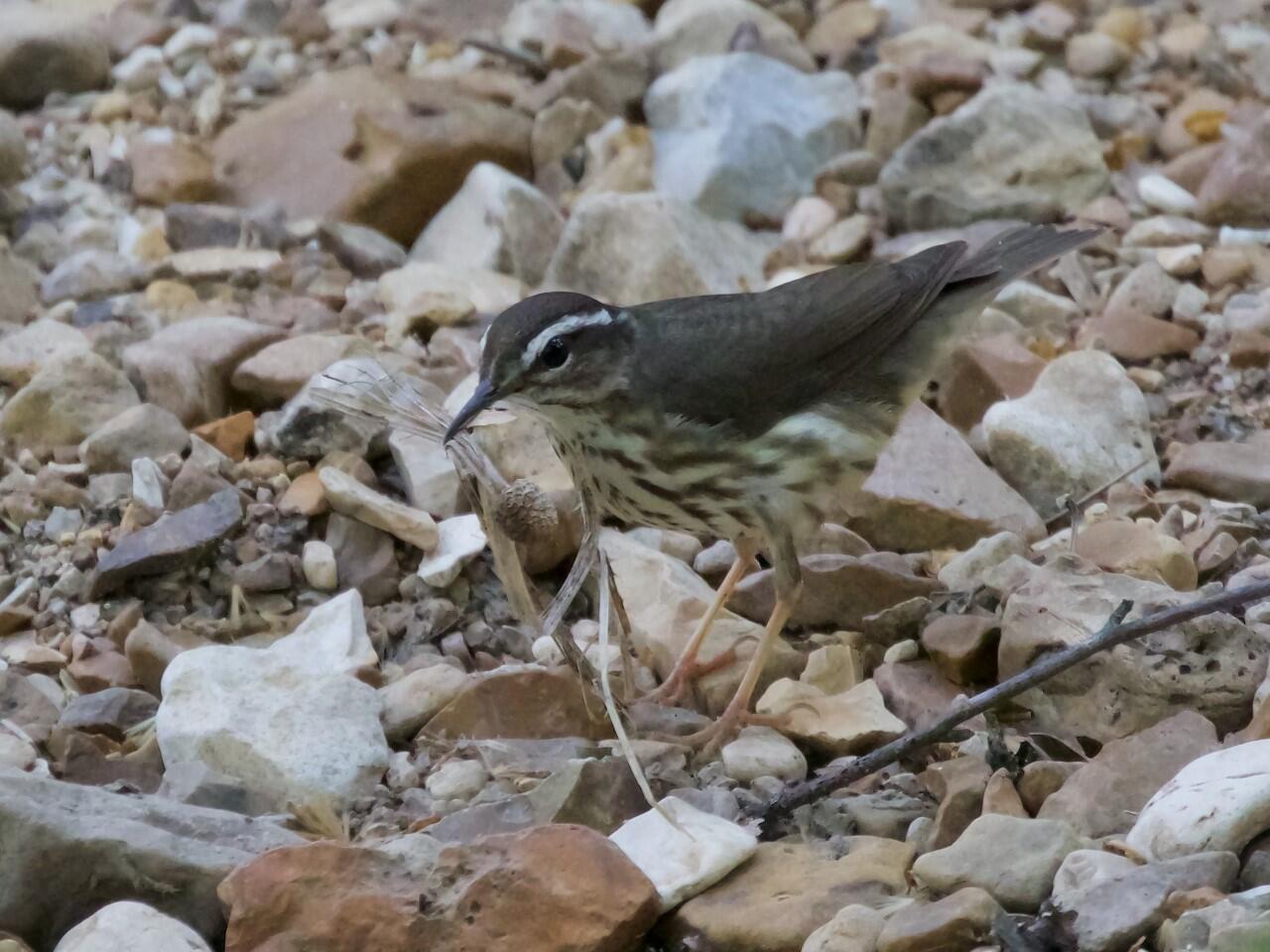
Lastly, Shoal Creek gave me what is likely a one-time birding experience involving a Louisiana Waterthrush. In general waterthrushes are a challenge to locate and, for sure, photograph as they wander through backwater environments. Louisiana and Northern are the two waterthrushes found in North America. The Louisiana has a more southern nesting region than the Northern and, as a consequence of where I have traveled, I have seen it very few times. The two species can be difficult to distinguish because differences in their field marks can be questionable. One often-cited field mark for the Louisiana versus the Northern is that the former has relatively little or no streaking on its throat. Importantly, the Louisiana nests under a bank overhang near running water. That was the case for the Louisiana Waterthrush that I observed building a nest along the Shoal Creek. A second Louisiana - I assume the male of the pair - did not take part. The female’s beak was literally overflowing with grass and weed materials. She made countless trips in spite of my presence, sometimes carrying dead leaves scavenged from the nearby area. Note the lack of streaking on the throat.
Obviously, the color in the photo is quite washed out. This was unavoidable as it was very early in the day with no direct sunlight and only the grayish illumination from deep in the woods. There were some white-balance adjustments and a limited amount of post-processing was done to improve the quality of the image. The light was so weak that the camera was set at an ISO of 5000 with 1/500 second shutter speed. In a future article I will confess to one of those rare occasions when I drastically made use of Photoshop.
Having reached Missouri, the reader might wonder just where the road will lead next as the cyber-tour continues north. This may be a surprise, but the tour will devote a couple stops to eastern Iowa. This is my boyhood home and, as I become fully involved in birding in later life, I developed close relationships with the birding community there. And the spring bird migration in Iowa can be exceptional. As I travel north from Joplin, I always make a short stop at Cuivre River State Park north of St. Louis and near Troy, Missouri. There are hiking trails that go deep into the heavily forested hillsides, which have been protected from agricultural development. The last photo gives the reader a glimpse of the deep hardwood forest there that supports a Gray-cheeked Thrush on its migration to the arctic from as far as South America.

